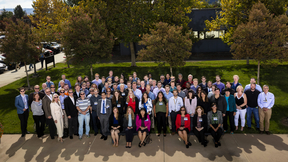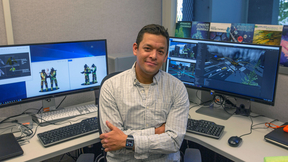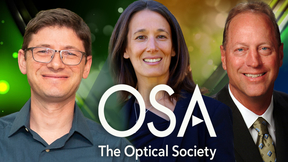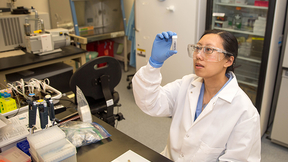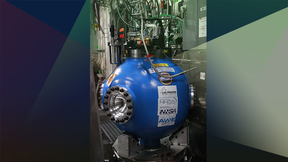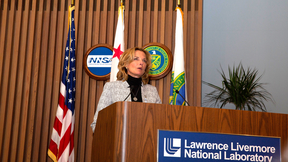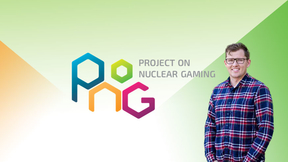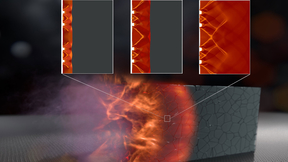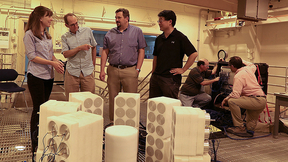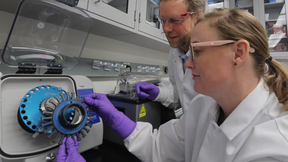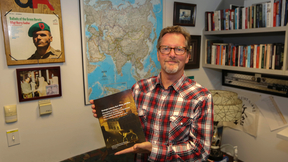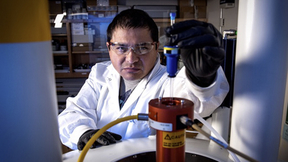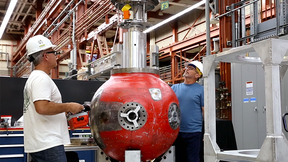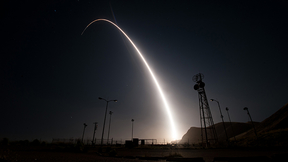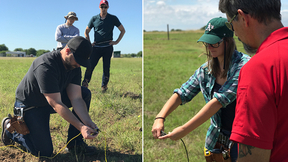Back
Global Security
Join the largest online wargaming event ever
The Project on Nuclear Gaming (PoNG) is hosting an online playfest for its first game, SIGNAL, a video game focused on understanding the issues surrounding nuclear deterrence and strategic stability. Thousands have signed up to play SIGNAL since the public launch in May 2019 and the experimental wargaming concept has been featured in the Bulletin of the Atomic Scientists…
Nuclear Science and Security Consortium meets at LLNL
Once a year, a community of university professors, students and national lab researchers who focus on nuclear science and security gather to share research updates and develop collaborations, among other tasks. Earlier this month, the group — known as the Nuclear Science and Security Consortium (NSSC) — held its 2019 fall workshop at the Laboratory. The 2019 NSSC workshop…
Lab's space program is on the rise
Nascent security challenges, novel scientific discoveries and new technology development opportunities are all part of outer space and in the focus of the Lawrence Livermore National Laboratory's (LLNL) Space Science and Security Program (SSSP). The national security community now refers to space as a “warfighting domain.” As such, it is both integral to the U.S. defense…
NARAC celebrates 40 years of operations
"What the Lab’s National Atmospheric Release Advisory Center (NARAC) does is it provides dispassionate science during fearful events." In one sentence, Jay Tilden summed up what NARAC has done for the nation for the past 40 years. Tilden is the National Nuclear Security Administration’s (NNSA) associate administrator for Counterterrorism and Counterproliferation. He joined…
Dirty bomb simulator prepares responders
If a radiological dispersal device (RDD), or "dirty bomb," ever explodes in the United States, emergency crews may be better prepared because of a simulator developed by an Lawrence Livermore National Laboratory (LLNL) visualization technologist. Called the RDD Studio, the model was developed by the Lab’s Ryan Chen to provide a detailed simulation of what an optimal…
Three Lawrence Livermore scientists named senior members of the Optical Society
Lawrence Livermore National Laboratory (LLNL) scientists Félicie Albert, Eyal Feigenbaum and Bruce Warner have been named senior members of the Optical Society (OSA), an international organization for optics and photonics scientists, engineers, educators and business leaders. Senior membership status recognizes members with more than 10 years of professional experience in…
LLNL-led study finds any single hair from the human body can be used for identification
Any single hair from anywhere on the human body can be used to identify a person. This conclusion is one of the key findings from a nearly year-long study by a team of researchers from Lawrence Livermore National Laboratory’s (LLNL) Forensic Science Center (FSC) and Michigan State University. The team’s study, published in Scientific Reports, a journal of Nature Magazine,…
Subcritical experiment captures scientific measurements to advance stockpile safety
Lawrence Livermore National Laboratory (LLNL) successfully executed its first subcritical experiment since 2003 on Feb. 13 at the Nevada National Security Site (NNSS) U1a facility. The experiment — dubbed "Ediza" — took place deep below the desert floor and was the culmination of a five-year campaign aimed at capturing high-fidelity plutonium data in support of nuclear…
NARAC marks 40 years of emergency response
It’s been 40 years since the first emergency phone call came in from the Department of Energy to Lawrence Livermore National Laboratory (LLNL). An accident had occurred at the Three Mile Island nuclear power plant on March 28, 1979 that led to a release of radioactivity into the atmosphere. This is how the National Atmospheric Release Advisory Center (NARAC) was born. Over…
A universal tool to improve global security
Elusive antineutrinos can help monitor nuclear power plants and other activity The United Kingdom is investing nearly £10 million (about $12.7 million) in a joint project with the United States to harness existing particle physics research techniques to remotely monitor nuclear reactors. Expected to be operational in 2024, the Advanced Instrumentation Testbed (AIT) project…
Potential benefits of next-generation wargames
Technological advances for game engines and cloud architectures are fueling the development of next-generation wargames that can increase insights for policymakers, according to the authors of a paper published today. In an article appearing in the Dec. 21 edition of Science Magazine, researchers from Lawrence Livermore National Laboratory (LLNL), Sandia National…
Uncovering secret structure to safer explosives
A team of scientists at Lawrence Livermore National Laboratory (LLNL) has shown that the structure of microscopic pores in high explosive materials can significantly impact performance and safety. These findings -- published recently as the cover article in the journal Propellants, Explosives, Pyrotechnics -- open the door to the possibility of tuning high explosives by…
Theory aids analysis of nuclear materials
Nuclear emergency teams, safeguards specialists and others may one day benefit from an expanded nuclear fission chain theory and detectors developed by a team of Lawrence Livermore Nationla Laboratory (LLNL) physicists. The Livermore scientists have bolstered their theory for understanding nuclear fission chains -- a cascade of atomic nuclei splitting, each initiated by a…
LLNL-led team expands forensic method to identify people using proteins from bones
When a team of researchers led by Lawrence Livermore National Laboratory (LLNL) developed a new biological identification method that exploits information encoded in proteins, they thought it could have multiple applications. Nearly two years later, they’ve turned out to be right. In September 2016, LLNL scientists announced they had developed a science-based,…
New Center for Global Security Research book explores dark side of new technologies
A new book by the Lawrence Livermore National Laboratory's (LLNL) Center for Global Security Research (CGSR) explores the military and security implications of emerging and disruptive technologies. The latest in its strategic latency series, "Strategic Latency Red, White and Blue: Managing the National and International Security Consequences of Disruptive Technologies,"…
Lawrence Livermore to lead United States-United Kingdom consortium for demonstrating remote monitoring of nuclear reactors
LIVERMORE—Harnessing the unusual characteristics of the elusive subatomic particles known as antineutrinos, Lawrence Livermore National Laboratory (LLNL) will lead a new international multi-laboratory and university collaboration for nonproliferation research. The program will support the development of detection hardware and algorithms to enable improved nonproliferation…
FSC earns 8th straight A in OPCW tests
During its 15 years as a certified laboratory for the Organization for the Prohibition of Chemical Weapons (OPCW), a score of Lawrence Livermore National Laboratory (LLNL) chemists have developed some first-rate habits. One of them is earning A grades on the organization's environmental proficiency tests. In recently announced results, LLNL earned its eighth straight A…
Plutonium research to advance stockpile safely
Conducting an experiment that combines high explosives with plutonium -- a special nuclear material used in nuclear weapons -- is no trivial matter. Not only do researchers need to ensure the plutonium remains "subcritical" to avoid a nuclear explosion, they must be absolutely certain that these materials are confined in a worst-case scenario. On top of that, they have to…
LLNL supports ICBM flight tests
As an unarmed Minuteman III intercontinental ballistic missile (ICBM) rocketed into the night sky, a team of Lawrence Livermore National Laboratory (LLNL) researchers listened intently to radio chatter and watched flight data stream in from a control room at the Ronald Reagan Ballistic Missile Defense Test Site. It was the first of two flight tests conducted recently to…
Alliance yields first class of explosives handlers
A dozen Lawrence Livermore National Laboratory (LLNL) employees were honored last week as graduates of the inaugural class of an innovative new Explosives Handler Training program conducted in partnership with Texas A&M Engineering Extension (TEEX). LLNL has conducted training of this sort independently for decades, but with an outflow of retirees and an influx of…



